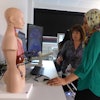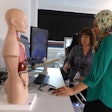
Are you a young radiologist keen to get your first publication but unsure where to start? Or are you just looking to publish more extensively? Please take a look at the encouraging advice and top tips from the current editor in chief of Insights into Imaging, Dr. Robert Hermans, a widely published and very experienced author of more than 150 articles. Here he outlines some possible projects for everybody, explains about practical issues such as the costs involved and the meaning of impact factor, and tells you which common mistakes to avoid. Take note and start planning now -- and good luck!
ECR Today: Publications look great on a curriculum vitae (CV), in particular when applying for a competitive job or seeking a promotion, but many trainees or junior radiologists may not know where to start. What options are out there?
 Dr. Robert Hermans, editor in chief of Insights into Imaging.
Dr. Robert Hermans, editor in chief of Insights into Imaging.Hermans: Case reports are a good way to start scientific writing for young radiologists. Although few journals accept case reports, these may have educational value. Therefore, the European Society of Radiology (ESR) has been publishing case reports, after peer review, for several years on its online platform EURORAD. There are also journals publishing case reports under the form of a letter or under the heading of "case of the month," or something similar. You should check the required structure of such a case report carefully, in order to be considered for publication.
If I am unable to undertake a large enough research project in my work setting, is there another option to achieve a good quality publication?
A more labor-intensive alternative to a case report is to produce a review article. Such a review article should provide a synthesis of the best published research on an important topic or question. It may, for example, discuss the use of imaging in a specific pathological condition. Some journals, such as Insights into Imaging from the ESR, consider such articles for publication. Apart from writing a review article, such work can also be presented as an electronic poster. Posters uploaded to EPOS remain accessible and receive a digital object identifier (DOI), making them fully citable publications.
What needs to be considered when trying to publish research data?
Obviously, a clearly defined research question is the start of everything. A paper is built around the purpose of the research that it describes. If the research did not have a clear purpose to begin with, it would be extremely difficult to create a convincing paper. When preparing a manuscript for submission, it is important that the guidelines for authors are read and followed, so that the manuscript is formatted in the correct way. It is equally important to read the additional documents that have to be signed, such as the copyright transfer agreement and the disclosure of conflict of interests, as these do contain important information.
After completing a scientific research project, which journals could I consider submitting abstracts to? What are realistic choices (for small local projects to larger studies)?
Choosing a journal for your scientific work largely depends on the target audience, but also on other elements, such as the speed of publication and the journal's impact factor. You should be realistic: a report on a small, local project is unlikely to be accepted for publication in an international journal. Results from a well-conducted original scientific study can be submitted to a highly ranked international journal. Even if not accepted, the reviewer's assessments may be very helpful for improving the quality of the manuscript; a submission of the revised manuscript to another journal might be successful!
What does "impact factor" mean? Does it matter?
The impact factor reflects how many times articles published in a journal over the last two years are being cited, relative to the number of articles published in that journal. The impact factor is published yearly in the Journal Citation Report. Although there is criticism of the actual value of the impact factor, it is believed by many to reflect the diffusion and scientific level of a journal. It is important to understand that it represents a journal metric and should not be used to judge the quality of individual articles in that journal.
Are there costs involved with open-access journals? What can I do if I don't have a sponsor or grant?
Traditionally, articles are published in journals published by a publisher, such as Springer, Elsevier, and others. These publishers cover their costs and make a profit by charging libraries and individual subscribers a subscription fee. In an open-access journal, a different business model is used. The authors of an article that is accepted for publication pay a certain fee to have the article published. The published article then becomes freely available to everybody.
A number of institutions have agreements with large publishers to cover the publication fee for authors belonging to the institution; this way the individual authors do not have to pay the fee out of their own pocket. However, authors may have to search for funding themselves if their institution has no agreement with the publisher. In this regard, I would like to mention that for Insights into Imaging, the ESR's open-access journal, the ESR pays the publication fee for all its active members.
Would you have any other hints or tips on getting work published? Are there any typical mistakes to look out for?
The structure of a research article is commonly referred to by the acronym IMRaD, which stands for introduction, material and methods, results and discussion; each of these sections has specific content. A common problem observed in manuscripts from novice authors is mixing up the different sections. Incomplete information is also a common problem. Finally, I would like to stress that citation rules should be rigorously followed. Paraphrased material must be cited by source. If information is used word for word, it should be between quotation marks with an appropriate citation. Ask permission from the copyright holder to use images or text passages that have already been published elsewhere, provide evidence that permission was granted, and include proper references in the manuscript. Material available for free in the public domain (e.g., from websites) is often protected by copyright and cannot be used without prior permission.
Dr. Robert Hermans is professor of radiology at UZ Leuven in Belgium, and he specializes in head and neck radiology. He has served as editor in chief of Insights into Imaging since 2010.
Dr. Christiane Nyhsen is consultant radiologist at Sunderland Royal Hospital, U.K. She is a member of the editorial advisory board of AuntMinnieEurope.com, and former chairperson of the ESR Radiology Trainees Forum.
Originally published in ECR Today on 7 March 2015.
Copyright © 2015 European Society of Radiology













